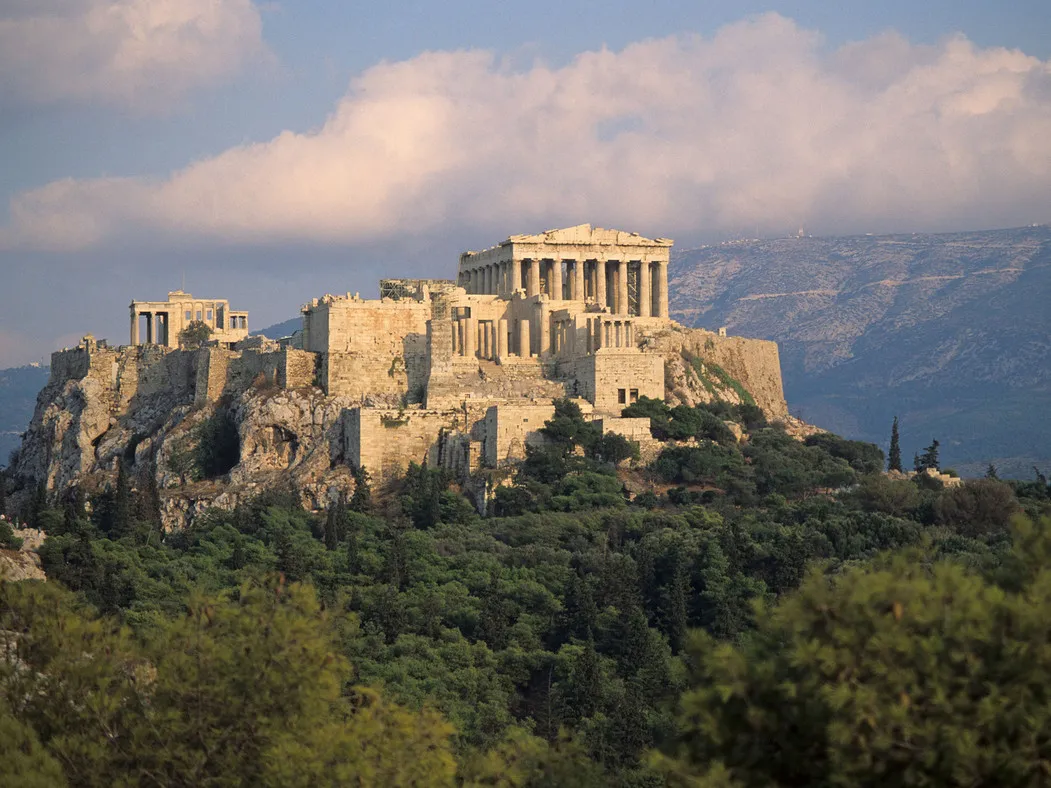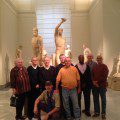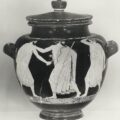In what culture did the king of the gods, the greatest heroes, and the greatest general all have boyfriends? Ancient Greece, of course. Many cultures have viewed same-sex relations more positively than America traditionally did—but no-one tops the ancient Greeks. Male-male relations occupied a key role in their culture: they were thought of as the way that young men learned the best and most masculine virtues and skills from older men. Especially courage in battle!
And there is also a little evidence that female-female relationships were important too, but is mostly in the poetry of their greatest (by their standards, and ours) lyric poet, Sappho of Lesbos, who wrote about her lesbian loves. But we don’t have enough other evidence to generalize confidently.
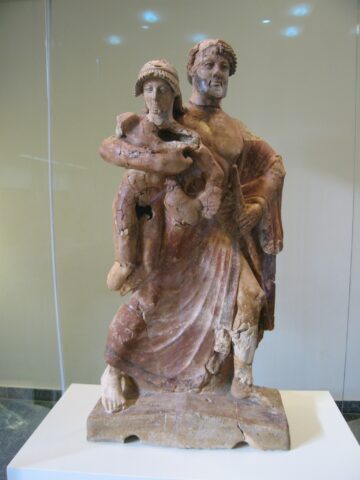
Ganymede, like so many young men in myth, as a prince, and also a shepherd—not a combination often seen in real life. Zeus saw how beautiful he was, transformed himself into an eagle, and carried Ganymede off to Mount Olympus, where he served as a personal drink-pourer for Zeus for all eternity.
Zeus’s behavior with Ganymede might not have been a good model for a Greek gentleman: swooping down and carrying a young man off is not likely to win you his affection. And the Greeks were aware of that.
But nonetheless, the fact that the king of the gods had this kind of relationship gave them a certain cachet, so the Greeks loved to depict Zeus with Ganymede. One of the places you will see them together is in Olympia, where a painted ceramic statue of Zeus carrying Ganymede crowned the apex of the façade of early version of the temple of Zeus—and is now in the museum.
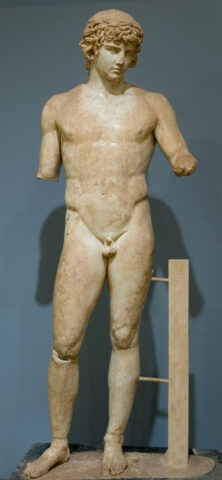
We don’t know a lot of details about the relationship—how old Antinous was when he met the Emperor, etc, is all lost in the mists of history—but we have a lot of statues and busts of him—about 150. In fact, he is one of the four most represented people from the Roman Empire, along with Julius Caesar, Augustus, and Hadrian. Why?
Because when he died—he drowned, mysteriously, in the Nile, when he and the Emperor were making a royal progress through that richest of Rome’s provinces—Hadrian had him declared a god. And he was worshipped throughout the Roman empire for centuries!
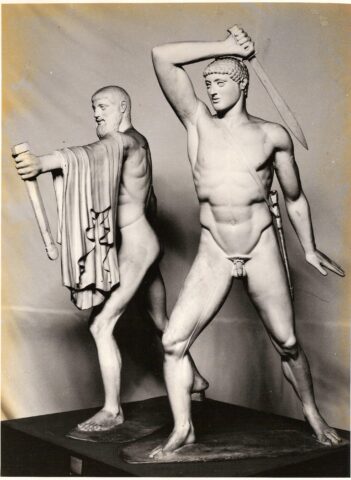
They sacrificed at their tomb, sang songs about them (we still have the lyrics!), and depicted them in many places, including this paired statue that was in the middle of the Agora, the center of civic and commercial life.
The best remaining copy of the statue is in the archeology museum in Naples, Italy (also very worth a visit) but in the Agora museum in Athens, there is a chunk of the original monument, on which you can still read the first letters of the name HARMODI. They were among the great models of the courage that the ancient Greeks thought young men learned from their male lovers—part of an amazing culture and an amazing survival from almost 3000 years ago!
Check out our Gay Greece 2025 Tour Itinerary
click the link https://www.oscarwildetours.com/gay-greece-tour-2021

